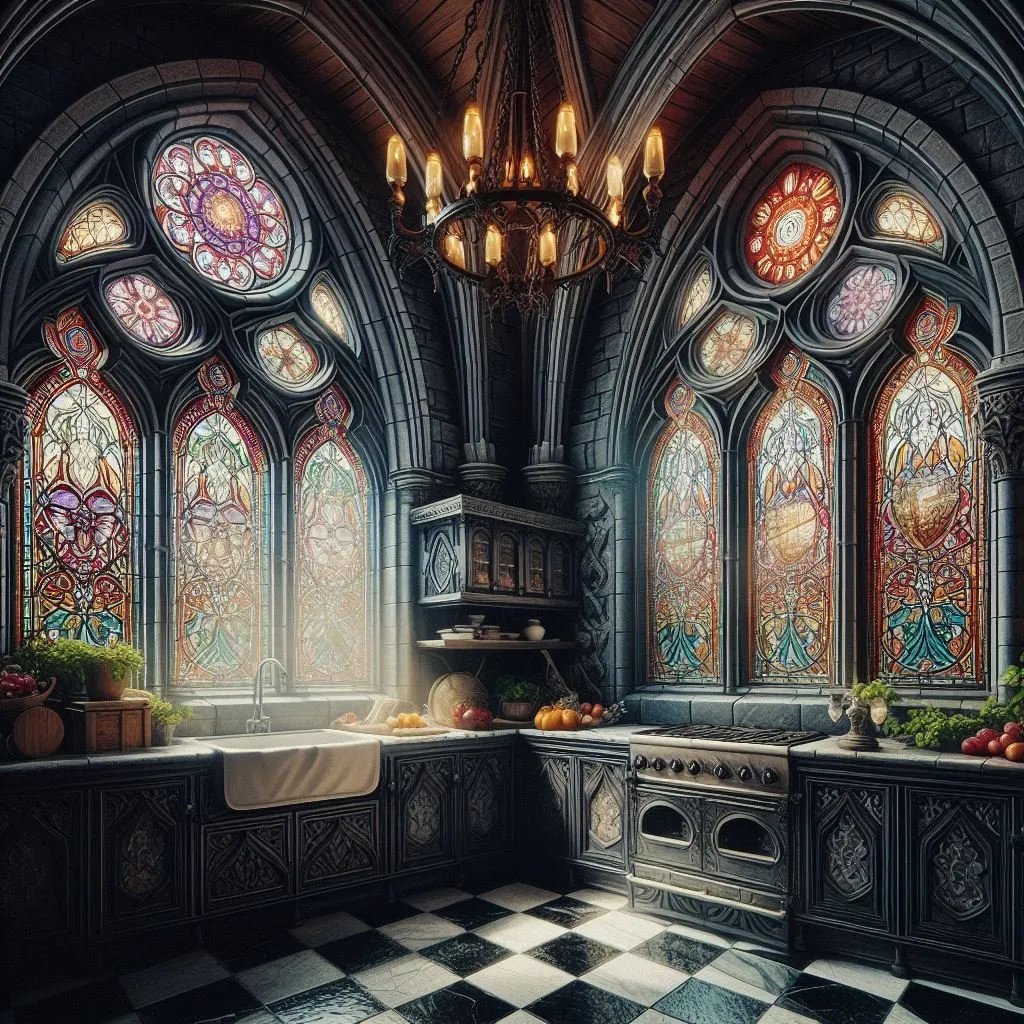Understanding Gothic Kitchen Decor
Gothic kitchen decor, a style that embraces the beauty of darkness, is more than just a trend; it’s a statement. It’s about creating a space that is both dramatic and inviting, with elements that evoke a sense of mystery and history. This aesthetic draws inspiration from the architecture and art of the Gothic period, characterized by pointed arches, intricate details, and a certain air of romanticism. When you embark on the journey of gothic kitchen decor, you’re not just decorating a kitchen; you’re crafting an experience. It’s about layering textures, playing with light and shadow, and incorporating elements that reflect your unique personality and appreciation for the unconventional. The gothic style has been around for centuries and is making a huge comeback.
Key Elements of Gothic Kitchen Design
Several key elements define the gothic kitchen, setting it apart from other design styles. The use of rich, dark colors is paramount, with deep blacks, charcoals, and moody jewel tones taking center stage. Texture plays a vital role, achieved through the incorporation of materials like wrought iron, dark woods, and perhaps even stone or brick. Architectural details, such as pointed arches and intricate carvings, can be subtly integrated to enhance the gothic feel. Lighting is crucial; chandeliers, sconces, and strategically placed lamps create the atmosphere, casting shadows that deepen the sense of mystery. Accessories, like antique candelabras, ornate mirrors, and dark-toned tableware, contribute to the overall gothic aesthetic.
Color Palette for Gothic Kitchens
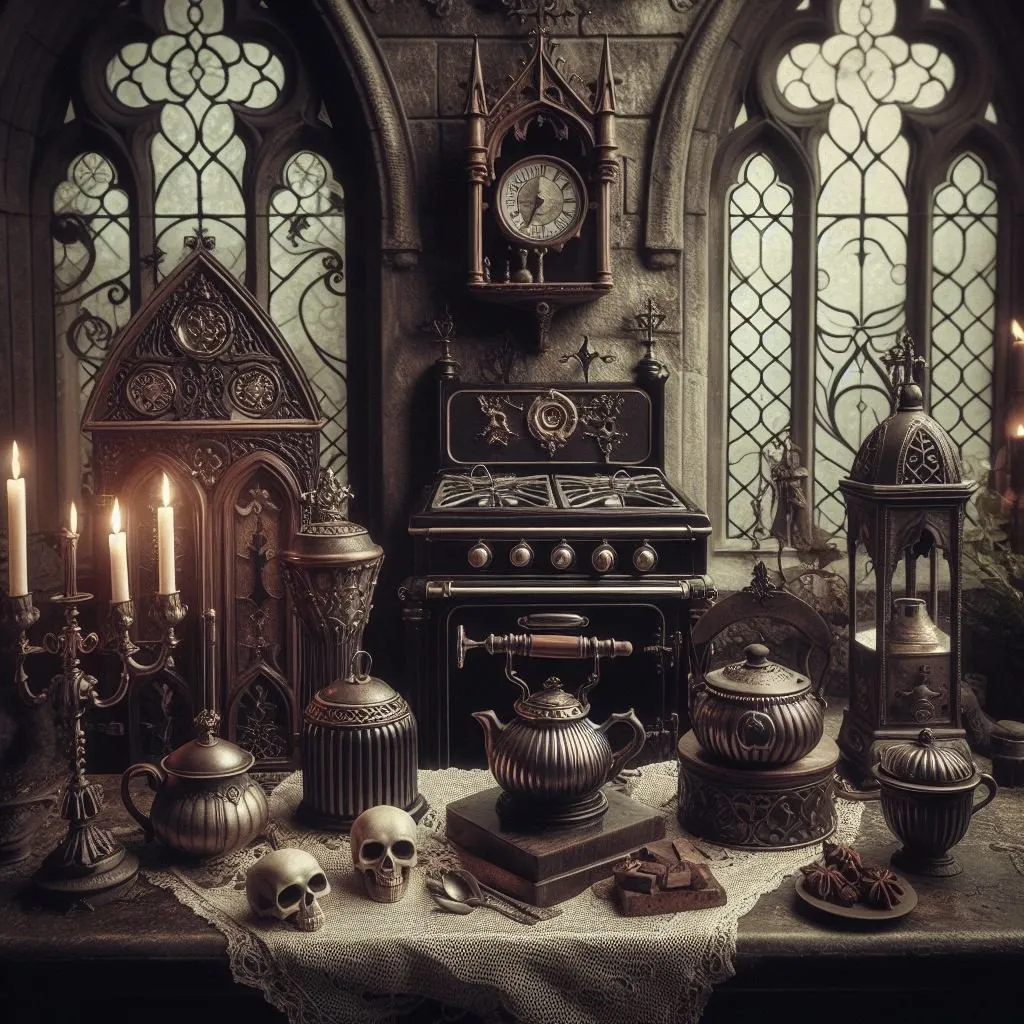
The color palette forms the foundation of a gothic kitchen. It moves away from the light and airy schemes often found in modern kitchens. Instead, it embraces a darker, more dramatic range. Consider it as a canvas to paint the gothic style.
Dark and Moody Hues
Deep blacks, charcoal grays, and even navy blues can serve as the primary colors for your gothic kitchen. These colors create a sense of intimacy and depth, forming a perfect backdrop for the other elements. When using these colors, consider balancing them with lighter accents to prevent the space from feeling overly dark. Metallic accents, like gold or silver, can also provide a beautiful contrast against the dark background.
Deep Reds and Purples
Rich, jewel-toned colors like deep reds, purples, and even emerald greens add a touch of luxury and vibrancy. These colors can be introduced through accent walls, cabinetry, or accessories. A deep burgundy or a regal purple can bring warmth and a sense of opulence to the kitchen. Consider using these colors in moderation to create a balanced and harmonious space, without overwhelming the existing design.
Choosing the Right Furniture
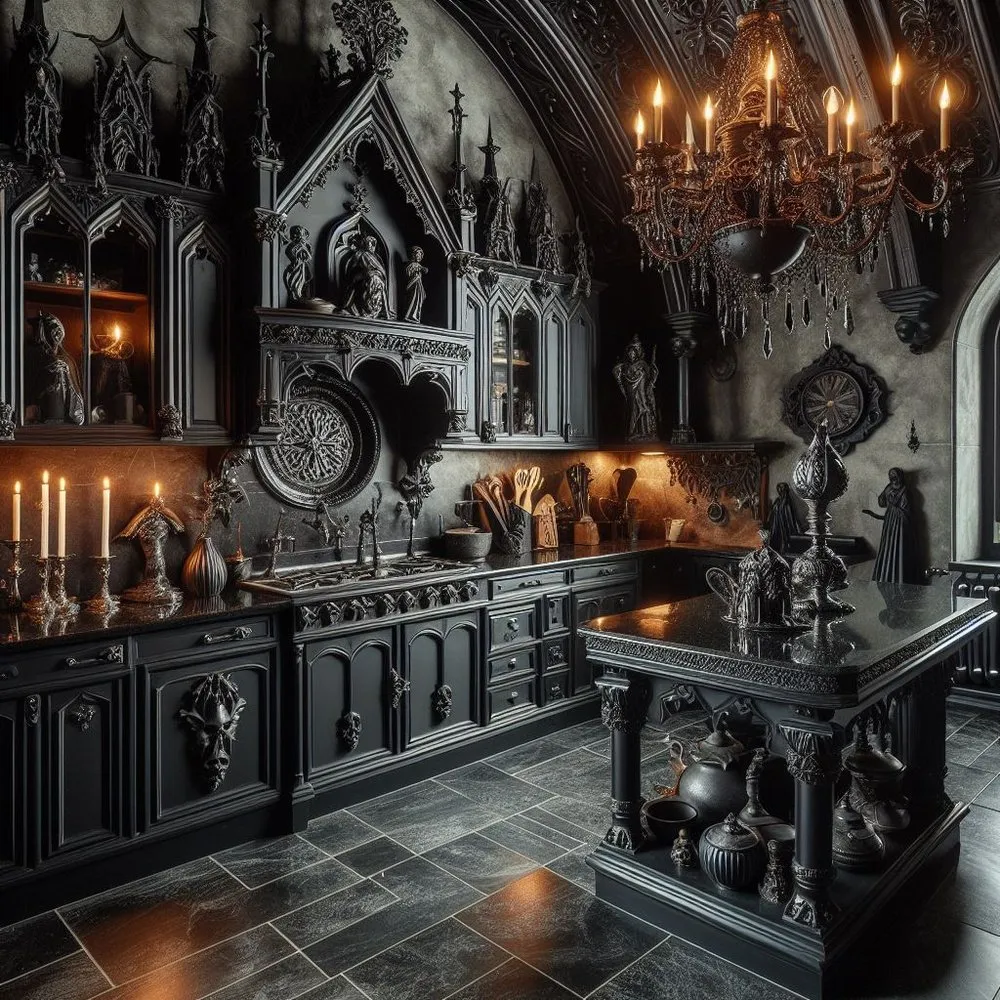
The right furniture can significantly contribute to the gothic atmosphere of your kitchen, enhancing the overall style. The furniture should align with the core elements of the Gothic period.
Gothic-Style Cabinets
Cabinets are a major element in any kitchen, and in a gothic kitchen, they should reflect the style’s aesthetic. Consider cabinets with dark finishes, such as stained wood in ebony or walnut, or painted cabinets in deep gray or black. Intricate carvings, pointed arches, and wrought-iron hardware can add a distinct gothic touch. If you prefer a more modern take, sleek, dark-colored cabinets with minimal hardware can also work well, provided they are complemented with other gothic elements.
Dining Tables and Chairs
Choose a dining table made of dark wood, perhaps with a sturdy, carved base. A large, rectangular table can be ideal, seating many guests, and reinforcing the gothic style. Pair the table with chairs that have high backs, perhaps with detailed carvings or upholstered in dark, luxurious fabrics like velvet or leather. The chairs can have nailhead trim or other details that add a touch of elegance and sophistication.
Essential Gothic Decor Supplies
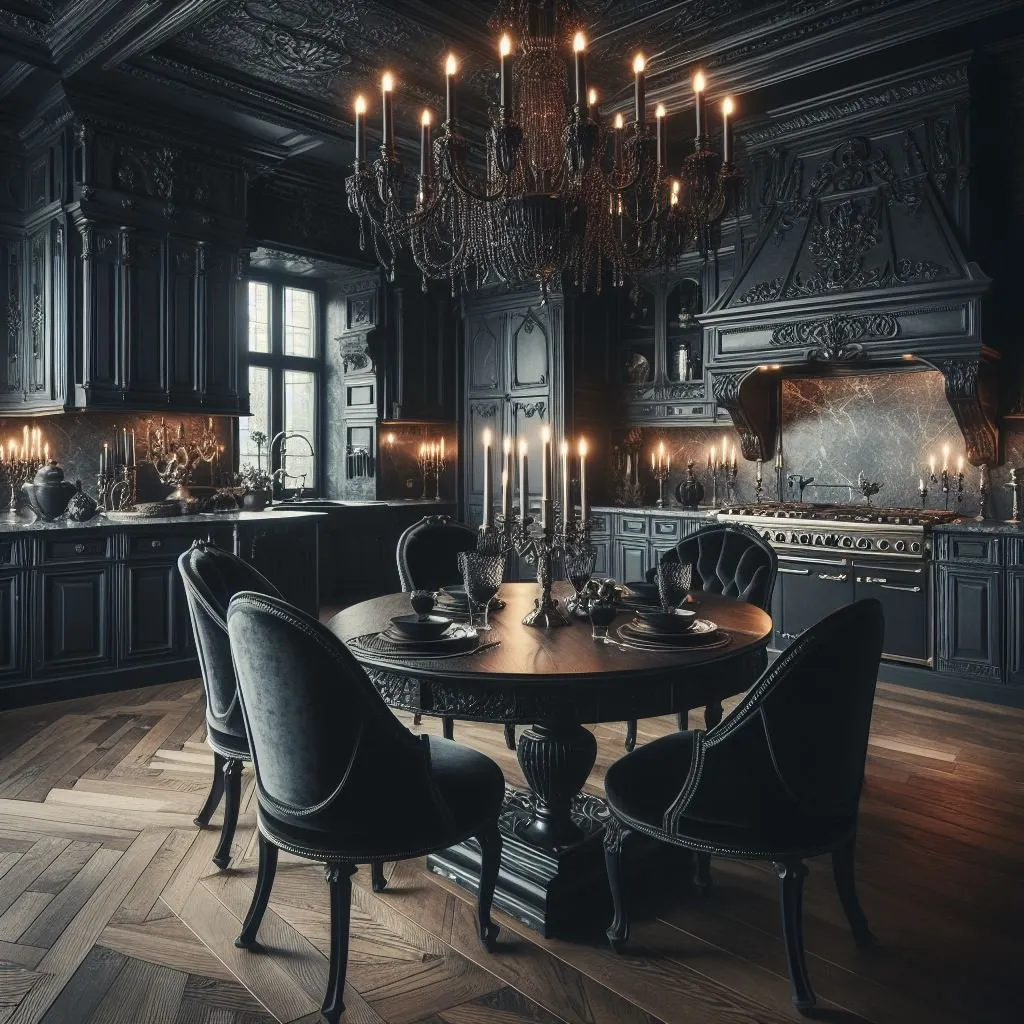
Several essential supplies can help you to achieve an authentic gothic kitchen style. It’s about incorporating elements that highlight the history and mystery of the style.
Lighting Fixtures for Gothic Kitchens
Lighting is a key aspect of gothic kitchen decor. Chandeliers are often the focal point. Look for chandeliers with intricate designs, such as those with wrought-iron frames or crystal embellishments. Sconces on the walls, with dark metal finishes, can add ambient lighting. Consider pendant lights over the island or dining area, perhaps with a vintage or antique look. The goal is to create a layered lighting scheme that casts shadows and adds to the overall mood.
Decorative Accessories and Embellishments
Accessories add the finishing touches that truly bring the gothic style to life. Antique candelabras, with dripping candle wax, can add a touch of mystery. Ornate mirrors, especially those with dark, carved frames, can reflect light and add depth to the space. Display antique tableware, such as dark-colored plates and goblets, in open shelving or a glass-front cabinet. Consider adding sculptures, such as gargoyles or other gothic-inspired figures, to the countertops or shelves.
Textiles and Fabrics in Gothic Kitchens
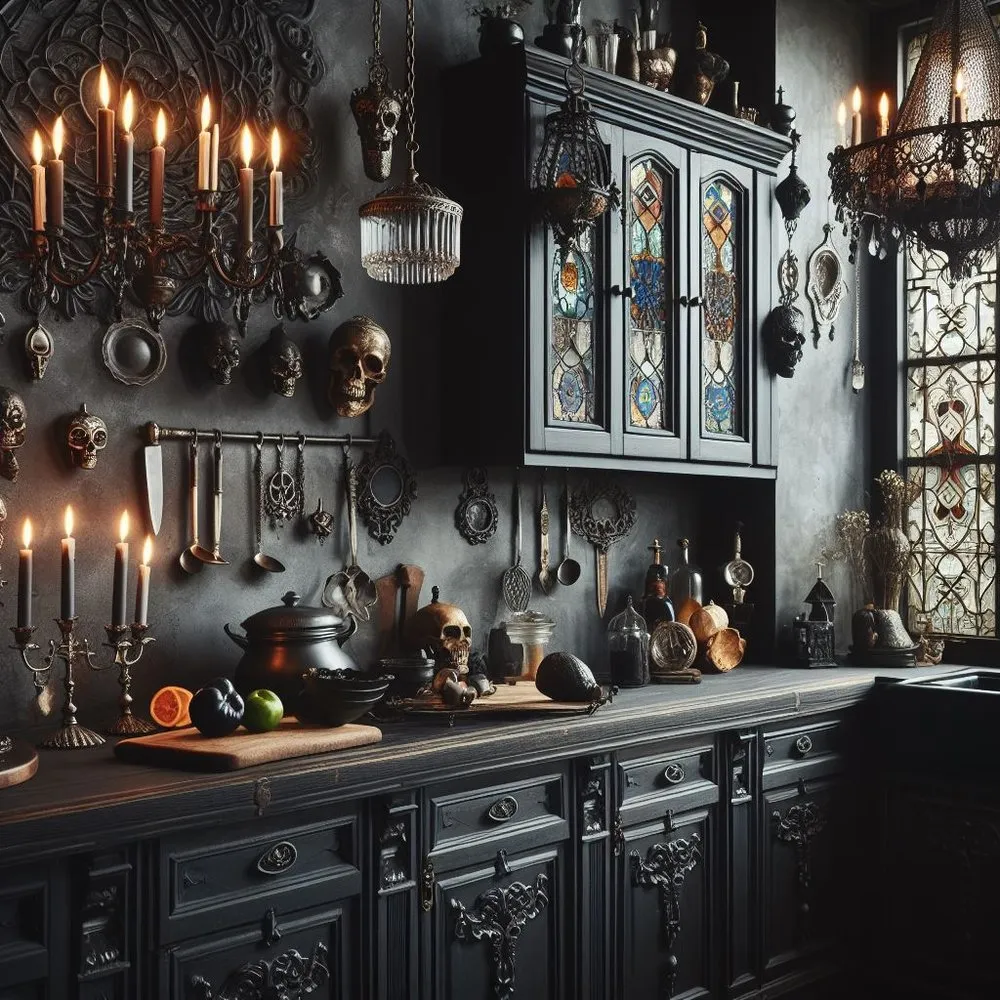
The choice of textiles and fabrics can greatly enhance the gothic atmosphere in your kitchen. Dark, luxurious fabrics like velvet, silk, and brocade can add texture and opulence. Use these fabrics for curtains, tablecloths, or chair upholstery. Consider patterns like damask or gothic-inspired motifs. Choose dark colors for a cohesive look, or introduce jewel tones to add visual interest. These fabrics can bring both comfort and sophistication to the space.
Creating the Gothic Atmosphere
Besides the essential elements, creating the gothic atmosphere is a matter of creating a feeling. It involves playing with light, textures, and a curated selection of accessories to evoke a sense of mystery and history. The atmosphere is created by the combination of these elements, and it has the potential to offer a unique and inviting space.
Tips for a Budget-Friendly Gothic Kitchen
Transforming your kitchen into a gothic haven doesn’t have to break the bank. There are various budget-friendly strategies. One of the most effective is to repurpose existing furniture. If you already have a kitchen table and chairs, try repainting them in dark colors or adding gothic-inspired hardware. Explore thrift stores and antique shops for affordable decor, such as candelabras, mirrors, and tableware. Consider painting an accent wall in a dark color to make a bold statement without a complete renovation. DIY projects, like crafting your own curtains or adding decorative details to cabinets, can also help you save money while adding a personalized touch to your kitchen.
